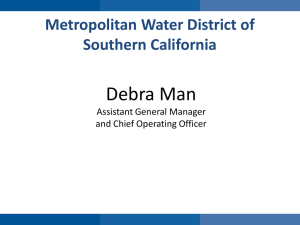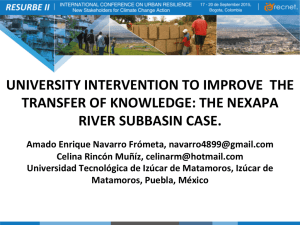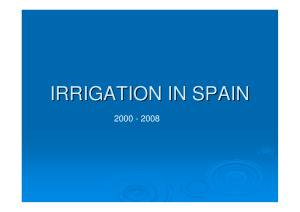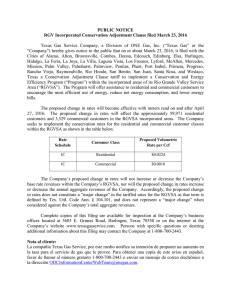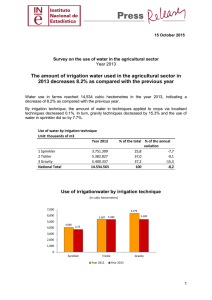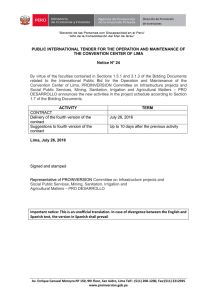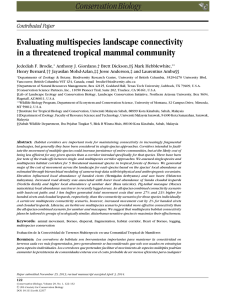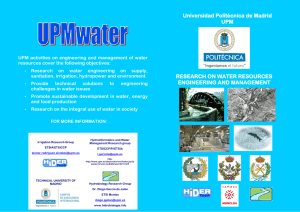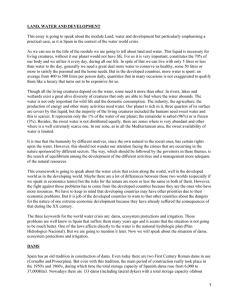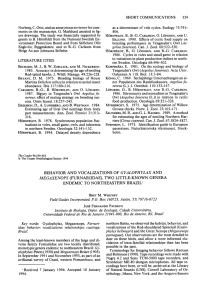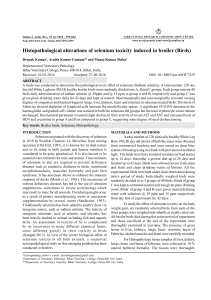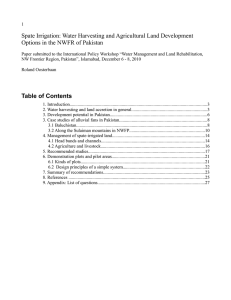PDF version
Anuncio
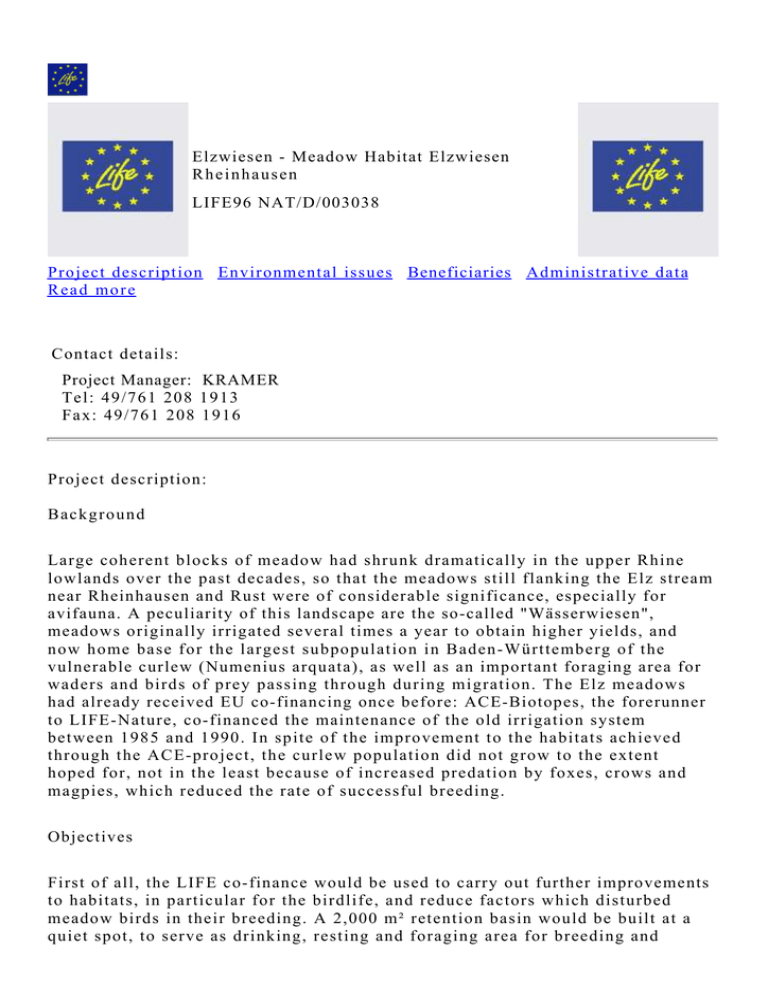
Elzwiesen - Meadow Habitat Elzwiesen Rheinhausen LIFE96 NAT/D/003038 Project description Environmental issues Beneficiaries Administrative data R e a d m o r e Contact details: Project Manager: KRAMER Tel: 49/761 208 1913 Fax: 49/761 208 1916 Project description: Background Large coherent blocks of meadow had shrunk dramatically in the upper Rhine lowlands over the past decades, so that the meadows still flanking the Elz stream near Rheinhausen and Rust were of considerable significance, especially for avifauna. A peculiarity of this landscape are the so-called "Wässerwiesen", meadows originally irrigated several times a year to obtain higher yields, and now home base for the largest subpopulation in Baden-Württemberg of the vulnerable curlew (Numenius arquata), as well as an important foraging area for waders and birds of prey passing through during migration. The Elz meadows had already received EU co-financing once before: ACE-Biotopes, the forerunner to LIFE-Nature, co-financed the maintenance of the old irrigation system between 1985 and 1990. In spite of the improvement to the habitats achieved through the ACE-project, the curlew population did not grow to the extent hoped for, not in the least because of increased predation by foxes, crows and magpies, which reduced the rate of successful breeding. Objectives First of all, the LIFE co-finance would be used to carry out further improvements to habitats, in particular for the birdlife, and reduce factors which disturbed meadow birds in their breeding. A 2,000 m² retention basin would be built at a quiet spot, to serve as drinking, resting and foraging area for breeding and migrating birds. In addition, water inflow into a stream crossing the site ditch migrating birds. In addition, water inflow into a stream crossing the site ditch would be restored and the irrigation installations further renovated and upgraded. The project would also start up mowing programmes and the thinning of bushes along the "Alte Elz", activities to be continued afterwards with funding from the regional authorities. An action concept and targeted measures to bring the predation problem under control were to be developed in close collaboration with the hunting authorities, hunters and ornithologists. Cooperation with other interest groups was a recipe which the beneficiary had already put to the test successfully: by 1995 farmers and conservationists had been working together in the Elz meadows for ten years, and through the LIFE project this was to be continued. Results A management plan was elaborated to coordinate the maintenance of the site, including the irrigation system covering 300 ha. The traditional irrigating of the meadows was done via several ditches and ponds and regulated by weirs and irrigation installations, which had been partly abandoned. Several ditches were dredged and their banks mowed regularly. A number of weirs were repaired and new technology was used to simplify the irrigation management, formerly done manually using old-fashioned techniques. The focus for these measures was the subsite Kenzingen, where irrigation had stopped 20 years previously. Especially here, the infrastructure like ditches and weirs had to be restored from scratch. This was done and consequently an additional 45 ha were brought under irrigation management. The project obtained permits to create new bodies of shallow water on site. A five hectare pond was excavated, and 3 smaller ponds were added later nearby. They provide refuges for several Annex I birds. The banks of these ponds were designed to simplify their maintenance by mowing, mostly done by the farmers working on the adjoining meadows. The banks of the river Elz were lowered over a stretch 580 metres long and converted into a more natural environment. The conditions for mowing a 1 km long section of the banks were stipulated and agreed with those responsible for watercourse maintenance, who will take nature conservation aspects more into consideration. The ditch Hackgraben was no longer being used and maintained, and a continuation of the ensuing overgrowth would threaten the last occurrence of the Annex II dragonfly Coenagrion mercuriale. The ditch was dredged over 800m length and partly deepened; the banks were mowed. This was a compromise between nearby farmers, the drainage board and nature conservation aims. Not only the watercourses have been improved, also the meadows, abandoned for several reasons, were activated again and are now being mowed in favour of birds and insects, with stipulations for extensive use. Existing agri-environment contracts were improved and additional obligations were added to new and prolonged lease contracts for around 90 ha, while additional sections were leased out under the same conditions but at zero rent. The increasing number of birds in the project area proved the success of the measures. Only Numenius arquata was still vulnerable to predators and its breeding success was limited. It became clear that foxes and carrion crows (Corvus corone) are the main predators. Successful hunting and deterrence of these animals is practically and ethically not possible. So the only option is the improvement of the habitat of the curlew and so improve the breeding success. Two wardens were on-site for visitor guidance. Biological monitoring concerning birds as well as other animals and vegetation, followed up the measures of the project. The technical measures for birds were accompanied by awareness-raising actions in the nearby wetland Taubergießen, popular with tourists. LIFE co-financed a new improved parking lot and a nature trail, while a brochure informs visitors about the site and its nature conservation values. A positive side effect was the improvement of drinking water quality at the nearby pumping station supplying the local villages. A cost-intensive investment in a water quality improvement installation was not necessary any more, as the iron and manganese is, thanks to the measures of the LIFE project, now fixed in the soil and no longer enters the drinking water. Last but not least, excellent relations with the local water and drainage board were achieved and joint activities by the project with them were very well received by the local community. Top Environmental issues addressed: Themes Habitats - Grasslands H abitats - F res h w a t er Keywords endangered species‚ irrigation‚ population dynamics‚ protected area‚ water quality improvement‚ tourist facility‚ wetland‚ management plan Target EU Legislation Nature protection and Biodiversity Directive 79/409 - Conservation of wild birds (02.04.1979) Directive 92/43 - Conservation of natural habitats and of wild fauna and flora- Habitats Directiv ... Decision 93/626 - Conclusion of the Convention on Biological Diversity (25.10.1993) COM(95) 189 - "Communication on the judicious use and conservation of wetlands" (12.12.1995) COM(98)42 -"Communication on a European Community Biodiversity Strategy" (05.02.1998) Land & Soil Regulation 2078/92 - Agricultural production methods compatible with the requirements of the prot ... Target species Coenagrion mercuriale Natura 2000 sites SPA DE7712402 SCI DE7712341 Elzniederung zwischen Kenzingen und Rust Taubergießen, Elz und Ettenbach Top Beneficiaries: Coordinator Type of organisation Description Bezirksstelle für Naturschutz und Landschaftspflege Freiburg Regional authority The beneficiary was named 'Bezirksstelle für Naturschutz und Landschaftspflege in Freiburg' (District Agency for Nature Conservation and Landscape Management) during the LIFE project duration. It was the autonomous authority for any nature conservation work within its zone, occupying the level between the local authorities and the regional government. In 2004, the Bezirksstelle was dissolved as part of a restructuring process of the Baden-Württemberg administration. It became a 'department for nature conservation' within the subregional authority 'Regierungspräsidium Freiburg'. Top Administrative data: Project reference Duration Total budget EU contribution Project location LIFE96 NAT/D/003038 01-SEP-1996 to 30-NOV -1999 425,036.86 € 212,518.43 € Baden-Württemberg(Deutschland) Top Read more: Brochure Title: Naturschutzgebiet Taubergießen Brochure Title: Naturschutzgebiet Taubergießen Brochure with map, partly also in French Year: 1998 Editor: Bezirksstelle f. Nat. u. Landschaftspfl. Freiburg No of pages: 60 Top Project description Environmental issues Beneficiaries Administrative data R e a d m o r e
